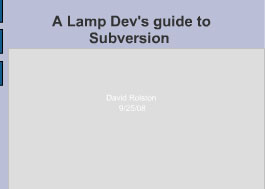Intel's T6500 -- No VT for you! Sony: You got Vaio VT? We turn it off.
At the time I'm writing this, you can easily find websites still listing the specifications for Intel's T6500 chip as including Intel VT. The T6500 is prevalent in the consumer Notebook space particularly because it was built to work with an 800mhz front side bus, allowing it to go in cheaper motherboards. You'll find the T6500 in a lot of midrange and budget 64bit notebook computers, from nearly all the major notebook manufacturers. Whether or not you care about VT depends on your interest in 64bit Virtualization software from Parallels to VMWare to Sun Virtualbox to Xen to VirtualPC.
VT is a marketing name for the hardware assisted virtualization workaround, originally named Vanderpool, that adds the Virtual Machine Extensions (VMX) instructions needed by VM's like Xen and Sun VirtualBox to provide 64bit OS virtualization. AMD has a similar set of extensions it added, marketed as AMD-V, although they built in the memory segmentation support that alleviates the problem with 64bit memory virtualization as far back as the D revisions of their AMD64 chips. One such website includes this boilerplate--
If you were to have visited Intel's own site prior to July 20th of 2009, you would have found information indicating that the chip had VT support. This is a fairly mind boggling omission when you consider that the chip was manufactured, delivered to customers, and has been sold to customers for well over a month before Intel corrected its own site! On July 21st, Intel updated its website, and VT support is now removed from the specs. An Intel representative agreed that the information on the site was incorrect, once challenged by a consumer with a T6500 based machine, who had used Intel's own tools to enumerate the features on the chip.
VT is a marketing name for the hardware assisted virtualization workaround, originally named Vanderpool, that adds the Virtual Machine Extensions (VMX) instructions needed by VM's like Xen and Sun VirtualBox to provide 64bit OS virtualization. AMD has a similar set of extensions it added, marketed as AMD-V, although they built in the memory segmentation support that alleviates the problem with 64bit memory virtualization as far back as the D revisions of their AMD64 chips. One such website includes this boilerplate--
T6500 contain Advanced Technologies about Intel Virtualization Technology that increasing manageability, security, and flexibility in IT environments, virtualization technologies like hardware-assisted Intel Virtualization Technology (Intel® VT)
If you were to have visited Intel's own site prior to July 20th of 2009, you would have found information indicating that the chip had VT support. This is a fairly mind boggling omission when you consider that the chip was manufactured, delivered to customers, and has been sold to customers for well over a month before Intel corrected its own site! On July 21st, Intel updated its website, and VT support is now removed from the specs. An Intel representative agreed that the information on the site was incorrect, once challenged by a consumer with a T6500 based machine, who had used Intel's own tools to enumerate the features on the chip.
Continue reading "Intel's T6500 -- No VT for you! Sony: You got Vaio VT? We turn it off."
I am sorry, I was mistaken. Thanks for bringing this to my attention.
The T6500 does not support VT. I used ark.intel.com as my reference, but as you pointed out, the information turned out to be incorrect. The processor feature information for the T6500 contained within ark.intel.com has been corrected. VT is actually not a feature of the T6500.
The processor identification tool is correctly reporting that VT is not a supported feature of the Intel® Core™2 Duo Processor T6500.
John S.
Intel Customer Support


